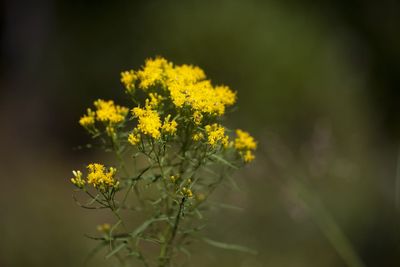What is Flat Top Goldenrod?
On a nature hike in many eastern states, you might come across this native goldenrod. What is flat top goldenrod? It is a tall, sprawling, fall-over-itself mess of a plant with beautiful flowers. Growing grass leaved goldenrod can help tempt pollinators to your landscape. Several bees and butterflies are drawn to the lovely flowers and their nectar. Combined with other native wildflowers, flat top goldenrod plants will pack a powerful golden punch. Flat topped goldenrod can become invasive due to its deep taproots. It is an upright, branched perennial that grows 1 to 4 feet (31 cm. to 1 m.) tall. The top of the plant is bushy due to the sub-branching of numerous stems and the slender leaves. The leaves have no petioles and taper to a point, narrowing towards the stem. Leaves have a strong scent when crushed. Each bright yellow, flat-topped flower cluster contains 20 to 35 tiny starry flowers. The outer flowers bloom first with a slow inward wave of opening. For those wondering how to grow flat top goldenrod, it is propagated through seed or division of the root ball and rhizome material.
Growing Grass Leaved Goldenrod
Whether started by seed, vegetative material, or purchased mature plant, this goldenrod establishes easily. Choose a location in full sun with moist but well-draining soil. The plant is usually found growing wild in wetlands but can tolerate slightly drier sites. Take rhizome divisions when the plant is dormant and plant immediately. Seed germination may benefit from stratification and can be planted in fall in a cold frame or directly into soil in spring when soil temperatures warm.
Grass Leaved Goldenrod Care
This is an easy plant to grow but can be a bit of trouble to manage. It is recommended to remove flowers before they seed or erect a native plant barrier to prevent the spread of seed. Keep plants moderately moist, especially in summer. In addition to pollinators, the flowers attract two species of beetle. The goldenrod soldier beetle produces larvae that are beneficial partners, feeding on the likes of maggots, aphids, and some caterpillars. The other beetle that likes to hang out with this goldenrod is the black blister beetle. Its name comes from the poisonous substance cantharidin, which can harm animals that eat the plant. For best appearance, cut back plants at the end of the season to 6 inches (15 cm.) from the ground. This will produce thicker, more lush plants and more of the blooming stems.
